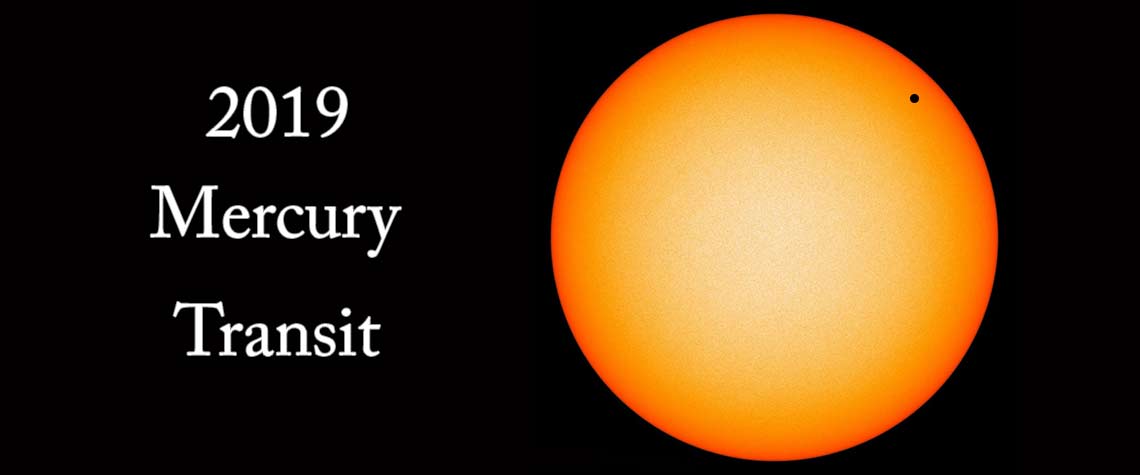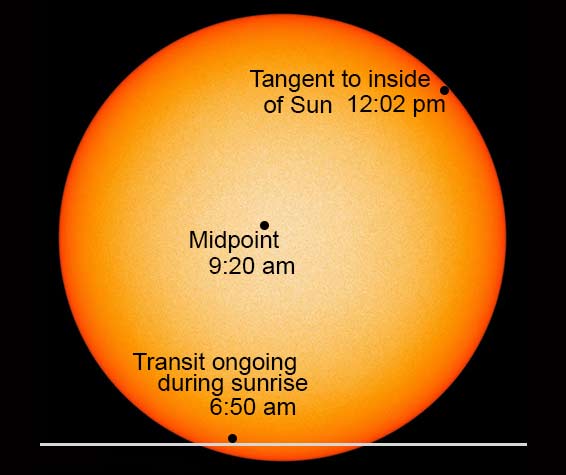Page 9


Mercury Transit - 2019
By Ginger Wentrcek
It's time to start thinking about making sure you have a solar filter and solar glasses if you want to photograph or video the Mercury transit, an event that happens just 13 times per century. Mercury can be observed drifting across the sun's face every 7 years, and on November 11, 2019, it will make that special appearance, lasting 5 hours and 16 minutes in the Bryan-College Station, TX. area.
Because Mercury is only 1/194th of the sun's apparent diameter, a telescope is necessary to see the transit. The magnification needed is dependent on the individual telescope specifications.
Black Drop Effect
Be sure to watch for the black drop effect at 12:02 p.m. At this time, a 'thread' will appear to attach Mercury to the edge of the sun. Mercury will be completely surrounded by sunlight as soon as the 'thread' breaks.
Contact 1 - 6:35:25 a.m. CST
Mercury is tangent to the outside of the Sun
Contact 2 - 6:37:06 a.m. CST
Mercury is tangent to the inside of the Sun
Sunrise in Bryan-College Station - 6:50 a.m. CST
Mercury transit in progress
Greatest Transit - 9:19:46 a.m. CST
Mercury has traveled across the sun and is tangent to the inside of the Sun
Contact 3 - 12:02:31 a.m. CST
Mercury has traveled across the sun and is tangent to the inside of the Sun
Contact 4 - 12:04:12 a.m. CST
Mercury has traveled across the sun and is tangent to the outside of the Sun
Source: timeanddate.com


PROTECT YOUR EYES AND DON'T GO BLIND
- DO NOT look directly at the sun.
- DO NOT look directly at the sun through standard sunglasses.
- DO NOT look at the sun through unprotected binoculars.
- DO NOT look at the sun through an unprotected telescope.
- DO NOT take photos of the sun if your camera does not have approved solar filters on the lens AND the viewfinder.
DO protect your eyes by using eclipse glasses, solar telescopes, solar binoculars, or viewing equipment that is protected with approved solar filters.